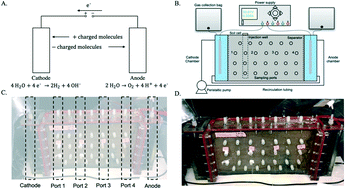Coupled electrokinetic and biological remediation method leads to improved treatment of chlorinated solvents at high sulfate, transport limited sites†
Abstract
Chlorinated solvents are some of the most pervasive pollutants found in groundwater and drinking water sources in the United States (U.S.). In the early 2000s, bioremediation emerged as a novel and effective technology, but was limited by challenges to delivery and transport of nutrients and microbes. Electrokinetic bioremediation (EK-Bio) has since emerged as a promising alternative to solve these limitations, delivering successful results at the lab and pilot scale. EK-Bio can be applied at sites where traditional bioaugmentation, the transformation of pollutants via an added microbial culture, is transport limited. The application of direct current in situ in electrokinetic (EK) remediation facilitates transport of the microbial culture and substrate in the subsurface. Despite this recent surge in interest surrounding EK-Bio, it is not clear how this technology would perform at a site with elevated levels of alternative electron acceptors, another common barrier to successful bioremediation. Our objectives were to use bench scale reactors to 1) determine which reactions and processes would dominate when using EK-BIO to treat TCE contamination at a site with high levels of the alternative electron acceptor sulfate, 2) compare EK-Bio to a traditional bioremediation application without electrokinetics, and 3) understand the effect of EK-Bio on the microbial community under these conditions. Our results showed complete transformation of TCE to ethene and acetylene by EK-Bio, while only 15% of TCE was transformed to cis-DCE and VC via traditional bioaugmentation. In the EK-Bio reactor, the majority of the TCE was converted to acetylene, likely due to its electrochemical reduction at the cathode. EK-Bio out performed traditional methods as it facilitated TCE biotic and abiotic transformation. Next generation sequencing analysis showed the microbial community in the EK-Bio reactor was highly enriched by the bioaugmentation culture, and community structure and diversity were minimally affected by the electrokinetic application. These results demonstrate that EK-Bio is an effective and promising remedy for treating chlorinated solvent contamination at transport limited sites with high concentrations of competing electron acceptors. This combined treatment strategy can be used to extend traditional bioaugmentation to a greater number of polluted sites, restoring more contaminated water systems for beneficial use.



 Please wait while we load your content...
Please wait while we load your content...